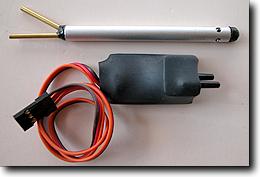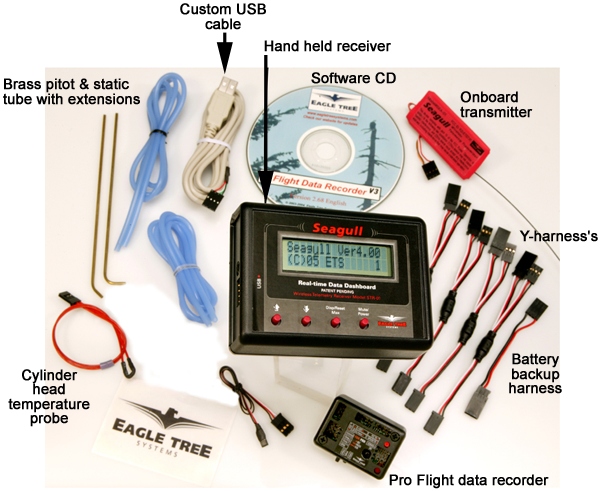|
Speed Control Devices
Let's Use Them
by Bob Violett
The Academy of Model Aeronautics and the
Jet Pilot's Organization established a 200 mph limit for turbine powered models.
This velocity limit is specific to turbine
powered model aircraft because the potential for speed is almost without
limits and the fact that high energy crashes can result in a fire.
The dynamic forces on a model increase
radically with speed. As these forces increase, so does the need
for more strength and integrity of the component parts of the machine.
The experience required to thoroughly check
and maintain these components to safely sustain excessive speed is beyond the
scope of most hobbyists.
During the flight testing stage, and before
we sell a new BVM jet product, we employ the Eagle Tree Telemetry System and the
JetCat Airspeed and GPS System to record speed and "G" forces. We found it quite revealing to really know
the speed and "G"s a turbine model can experience.
The speed of a large jet is deceptive
to our "model airplane senses". For instance, a high speed pass with a
96" long
Ultra Bandit might appear to be in the 200mph range when in reality, the
telemetry device records 230-240 mph. We also know that an aerodynamically
clean model jet with a high thrust-to-weight ratio can attain 300 mph or more.
So, unless your senses are finitely
calibrated to exactly determine the 200 mph limit and your throttle management
technique is tuned accordingly, I strongly suggest that we use the technical
devices at hand for safety reasons. These devices are also of great
benefit for precision approach and landing information and control.
High Tech Tools for High Tech
Pilots
The JetCat Accessories

GPS

JetCat Air Speed Sensor
Eagle Tree

If your brand of E.C.U. does not have a speed limiting
capability, the Eagle Tree System will provide a live readout of airspeed,
altitude, temperatures, etc.. Have your helper call out the speed or
listen for the warning tone on the "Dashboard".
Absolute Perfection Required
For an airframe to be able to operate safely at high
speed, every component must be in perfect working order. The higher the
speed, the lower the tolerance for imperfection.
The list of possible mechanical or electrical
imperfections that could be lingering in your model is almost endless, but
here are a few examples:
• A critical bolt
is mistakenly cross threaded.
• A threaded rod was bent too far
and is partially fractured.
• A servo gear or output arm spline
can be stripped by improper handling.
• A control linkage is not properly
designed.
• Upgrades in servo power were not
matched with increased safe amperage supply.
• Transportation or hard landing
damage was not thoroughly inspected, discovered, and properly repaired.
BVM stocks the JetCat and EagleTree equipment.
|